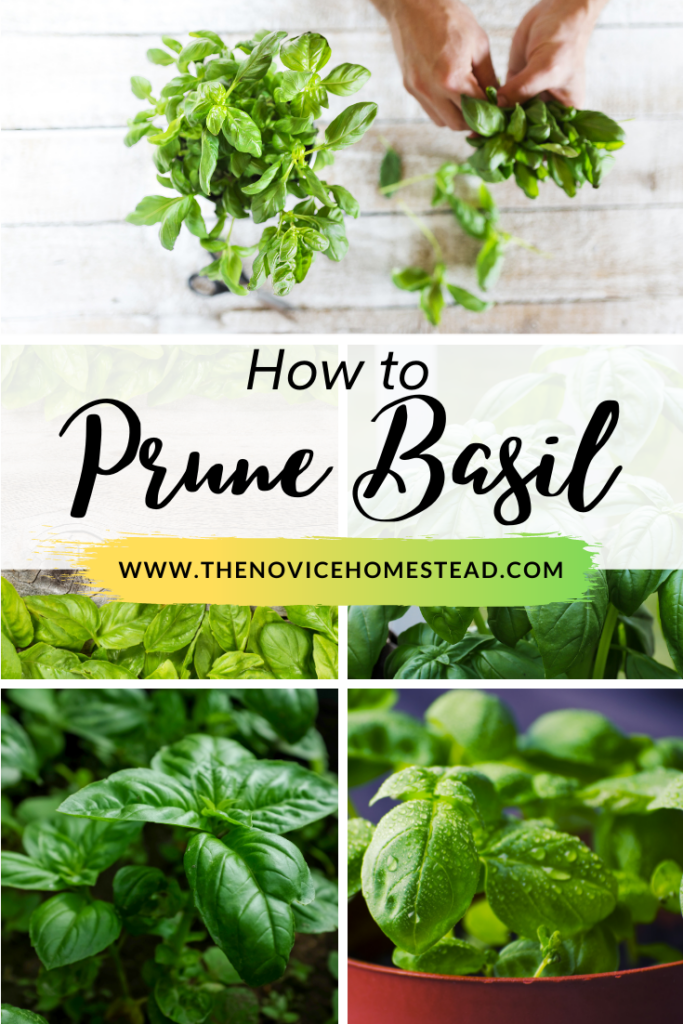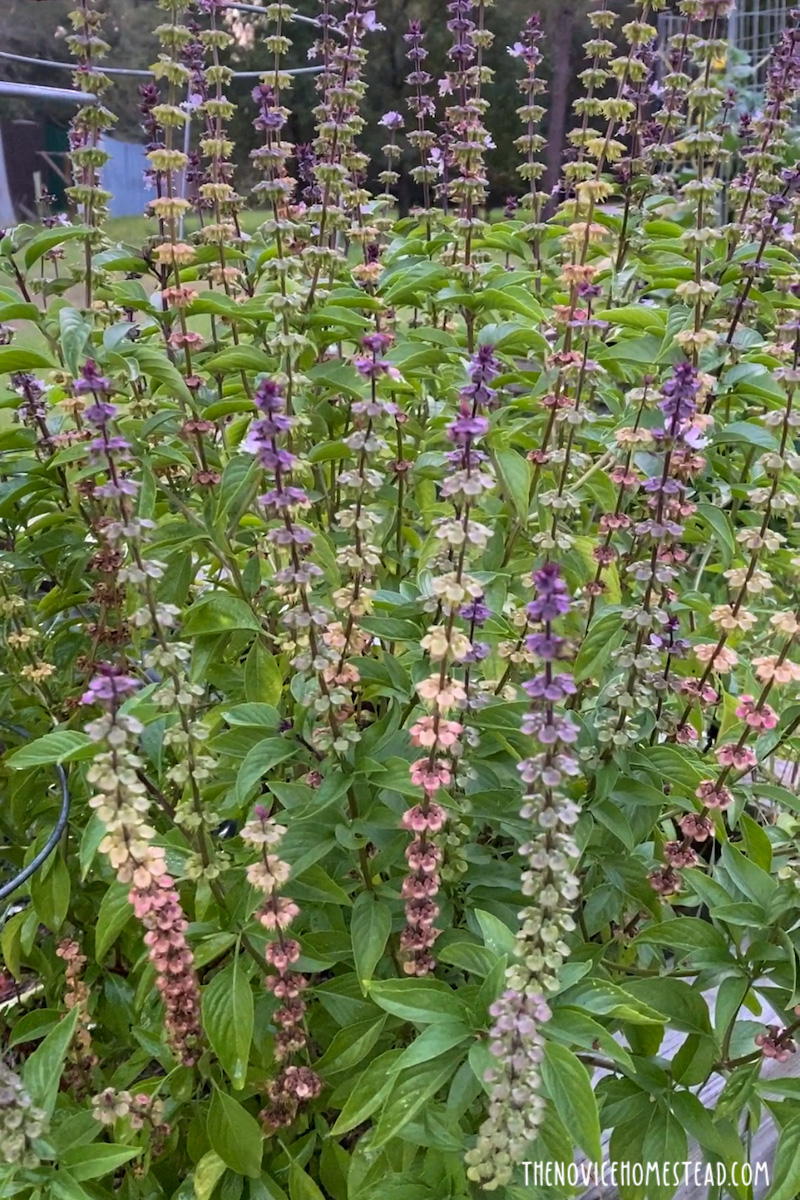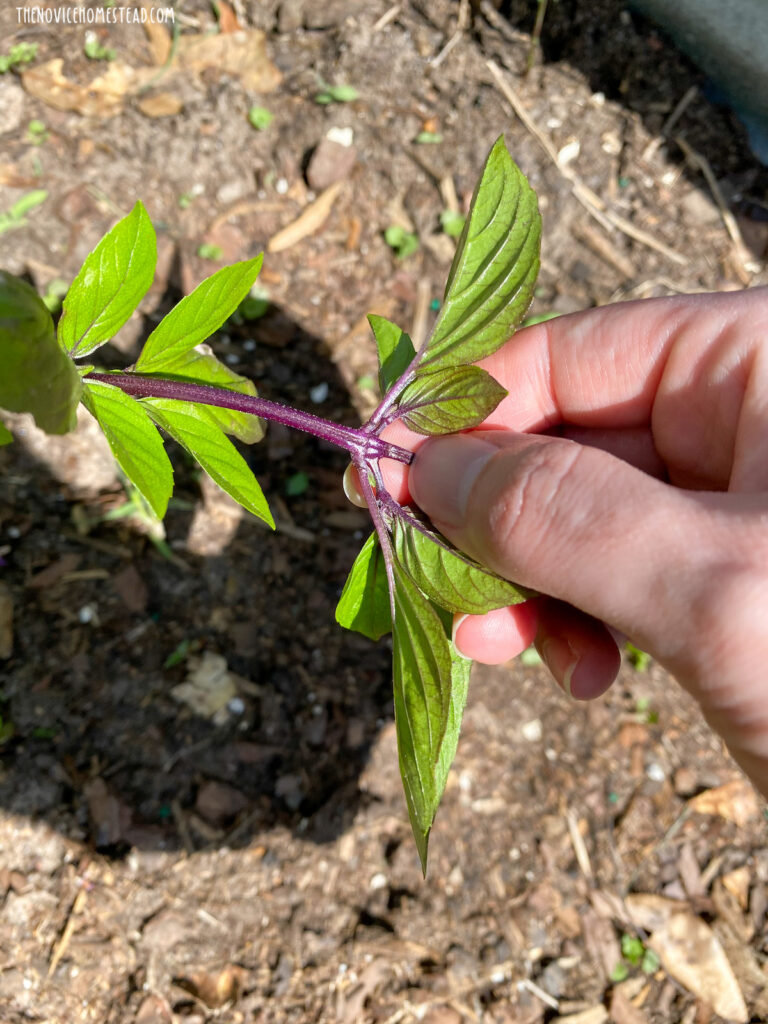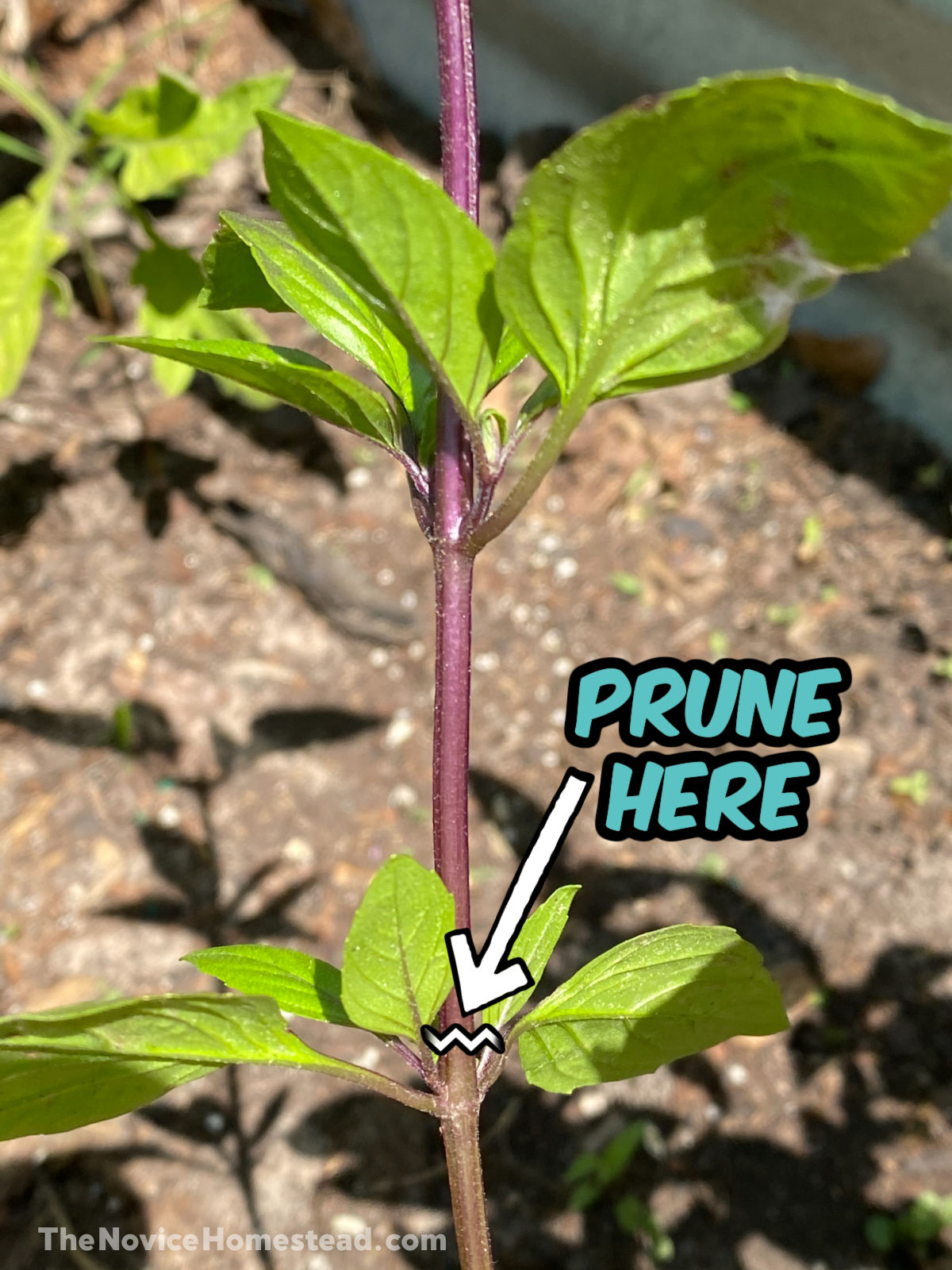Pruning basil encourages the plant to grow faster and fuller — we’ll show you two easy ways to prune basil for the most productive plant possible!

What is Pruning?
Pruning is a gardening technique of selectively removing leaves or portions of a plant to change the shape or concentrate energy to growing the preferred parts of a plant.
It may seem counterintuitive to cut away parts of a plant to make them grow better, but it works! Basil is one such plant that especially benefits from pruning.
Why Prune Basil?
Pruning basil encourages your plant to grow big and bushy, with abundant leaves. When basil is allowed to grow without any direction, it may become “leggy,” which means that the plant grows taller, but with more space between leaves.
Basil is also prone to flowering. While these flowers can be quite beautiful (check out the rainbow of flowers I allowed to grow on one of my Thai basil plants below), they actually “steal” energy that could be used for growing the flavorful leaves.
Flowering may also cause the leaves that do already exist to start to lose their flavor or even turn slightly bitter.

To make your basil as productive as possible, regular pruning is a must!
TIP: Basil flowers are edible! Instead of throwing them away, keep the basil flowers as a fragrant and decorative addition to salads or other dishes. You can even put them in a bud vase to brighten up your table or kitchen!
How Often Should You Prune Basil Plants?
Basil is a quick growing plant, so you can be pretty aggressive with your pruning. In fact, it’s almost impossible to “mess up” or over-prune basil! In fact, the only thing that’s ever killed my basil plants was an unusual cold snap — they don’t like freezing temperatures!
You don’t need to worry about pruning your basil until the plants are at least 6-8 inches tall. That’s because they usually only have one single stem at that point. However, once the plants are well established, you’ll want to start pruning weekly — or when you notice excessive flowering.
How to Prune Basil
Basil is one of the easiest plants to prune. There’s no one “right” way to do it — you can’t mess up! Here’s how we trim our basil plants to encourage them to grow faster and fuller:
Step 1: Remove the Flowers
One of the easiest ways to get started is to remove the flowers. Simply pinch or cut them off at the base of the flowering part of the stem. You can remove any and all flowers that you see. Trust me, they will try to grow back quickly!
Step 2: Prune Above the Nodes
Once you’ve removed any flowering areas, you’ll want to start pruning back your plant where you see new growth. Look for a “middle” stem, as opposed to any “side” or offshoots.
Skip over the first set of big leaves and look for a place on the stem where there is an intersection of the main stem, two offshoot stems, and perhaps some small leaves starting to sprout. This area is call the “node.” Trim or pinch the stem just above the node. Repeat as needed throughout the plant.

It sounds complicated when you type it out, but the process is actually quite simple! Here is a photo that illustrates where to prune a basil plant — sometimes seeing it makes it easier to understand!

Remember, you can’t really “mess up” when pruning basil!
On the other hand, if you get busy and forget to trim your basil plant, it will be ok too! Perhaps it won’t have quite as many leaves, but it will keep growing just fine. You can always get back to it when you’re able!
How Long Does Fresh Cut Basil Last?
When kept properly, your basil clippings can last a couple weeks. That way you can use them as needed and don’t need to worry about them going bad.
Click here to learn more about how to make fresh herbs last longer!
Did You Know?
Basil makes a wonderful companion plant for tomatoes! Click here to learn more about how to grow bigger and better tomatoes and why you should plant basil nearby!